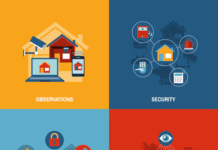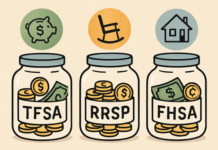Working in a nonprofit is mission-driven work, but it often comes with the same obstacles as small businesses: limited resources, lower budgets, and the need to create impact most. Nonprofits have to juggle fundraising, membership, events, communications, and regulation, alongside their core mission.
Fortunately, the digital tools available today allow these to be simplified. Tools like Springly are transforming the way nonprofits operate by offering intuitive solutions that save time and enhance productivity.
The Growing Sophistication of Nonprofit Management
Small nonprofits, too, face sophisticated administrative requirements. Managing donors, volunteers, and community events requires systems that are both reliable and expandable. In the absence of adequate tools, many organizations still rely on spreadsheets or disparate software. This inevitably leads to errors, redundant effort, and wasted time.
By simplifying these processes using today’s tools, nonprofits can release energy to care about what matters most: serving the community and advancing their mission.
Simplifying Communication and Collaboration
At the heart of many nonprofits’ primary issues is aligning everyone on the same page. Whether volunteers or board members, communication is far too often scattered across emails, chats, and scraps of paper. A cutting-edge nonprofit management platform brings this information together.
With built-in communication features, leaders can post news, distribute newsletters, and track engagement within one location. This gets rid of confusion and ensures that important messages are delivered to the right people. Good communication also ensures improved relationships with volunteers, members, and donors.
Automating Administrative Work
Administrative work, while necessary, can consume valuable time. Renewals of memberships, tracking of donations, and accounting reports take up more hours than many nonprofits have to spare. Automation makes this equation unequal.
Software that automates routine tasks, such as sending renewal notices or generating tax receipts, saves hours and reduces errors. Nonprofits can then allocate those free hours to program development, fundraising planning, or community work itself.
Data-Driven Decision Making
One benefit of more modern tools is having access to real-time data. Nonprofits can view donations, event attendance, and volunteer time in a single database. Being able to have that information at hand helps leaders make more accurate decisions regarding where to allocate resources.
For example, if the report shows that a fundraising event did well through email but not so well through social media, the team can adjust their strategy for future events. Data enables nonprofits to make their practice more effective and make a greater impact with fewer dollars.
Effective Fundraising and Donor Management
Fundraising is at the core of the majority of nonprofit operations. Donor management can be problematic without a structured approach. Modern nonprofit software offers an easy way to track donors by storing in-depth information, past communications, and donation histories within one area.
This allows nonprofits to segment donors by behavior and adapt communication. A year-round giver can receive a personalized thank-you, while someone who recently attended an event can be solicited to support a future program. Personalization builds trust and encourages individuals to give in the long term.
Increasing Transparency and Accountability
Donors and members expect transparency about how their contributions are being used. Nonprofits that can demonstrate accountability build stronger relationships with their supporters.
Modern management tools simplify financial reporting and compliance by generating professional reports quickly. These reports can be shared with donors, board members, and regulatory bodies to show exactly how funds are being managed. Transparency not only builds credibility but also inspires confidence in future contributions.
Why Nonprofits Require Contemporary Tools
Nonprofits typically have fewer staff and more modest budgets than their for-profit peers. Efficiency is then essential. Investing cash in a contemporary management platform is not a luxury: it is a necessity for lasting growth.
By facilitating communications, automating the administrative work, and giving real-time data, such tools enable nonprofits to do more with less. In place of drowning in paperwork, teams can focus on impact.
Final Thoughts
Efficient nonprofit management is not about convenience. It’s about breaking open the potential of organizations to better serve communities. Today’s digital platforms provide the infrastructure and support nonprofits need to organize, trust, and grow consistently.
Platforms like Springly make it simpler than ever before for nonprofits to function and stay mission-driven. When the proper tools are in place, nonprofits can devote less time to administering and more time to making a difference.
Find a Home-Based Business to Start-Up >>> Hundreds of Business Listings.














































